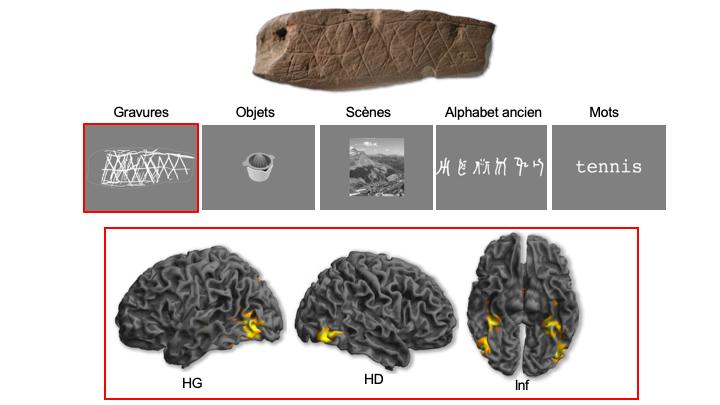
IMAGE: Top: Engraving discovered at the Blombos site (South Africa) dating back 75,000 years before the present. Center: Example of visual categories used in the experiment. Bottom: Lateral and inferior views… view more
Long before Lascaux paintings, humans engraved abstract motifs on stones, shells or egg shells. the earliest are 540,000 years old. For the archaeologists who discovered these objects, the question is whether they are the result of unpurposive behaviour, the simple desire of imitating nature or endowed with meaning. An unprecedented collaboration between archaeologists* and researchers in cognitive neuroimaging** from the CNRS, university of Bordeaux and CEA is providing answers to this question for the first time. These prehistoric abstract patterns are processed by the same brain areas that recognize objects. They also activate a region of the left hemisphere that is well known in the processing of written language. The results of this interdisciplinary collaboration reinforce the hypothesis that our ancestors attributed meaning to their tracings, perhaps even symbolic. They are published in Royal Society Open Science on 3 July 2019.
###
- The researchers belong to PACEA (CNRS / Université de Bordeaux / Ministère de la culture)
- The researchers belong to IMN (CNRS / Université de Bordeaux)
Disclaimer: AAAS and EurekAlert! are not responsible for the accuracy of news releases posted to EurekAlert! by contributing institutions or for the use of any information through the EurekAlert system.




